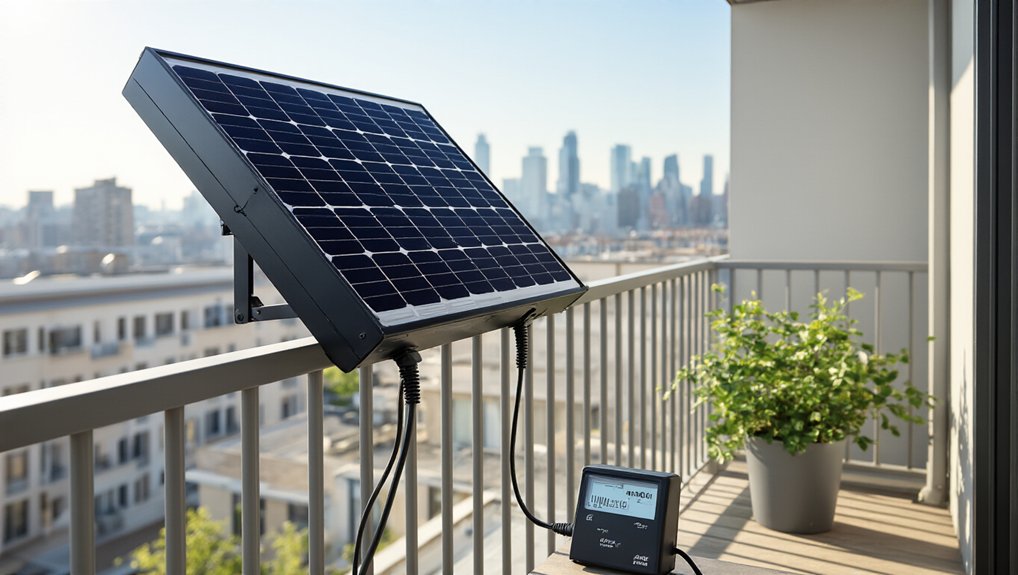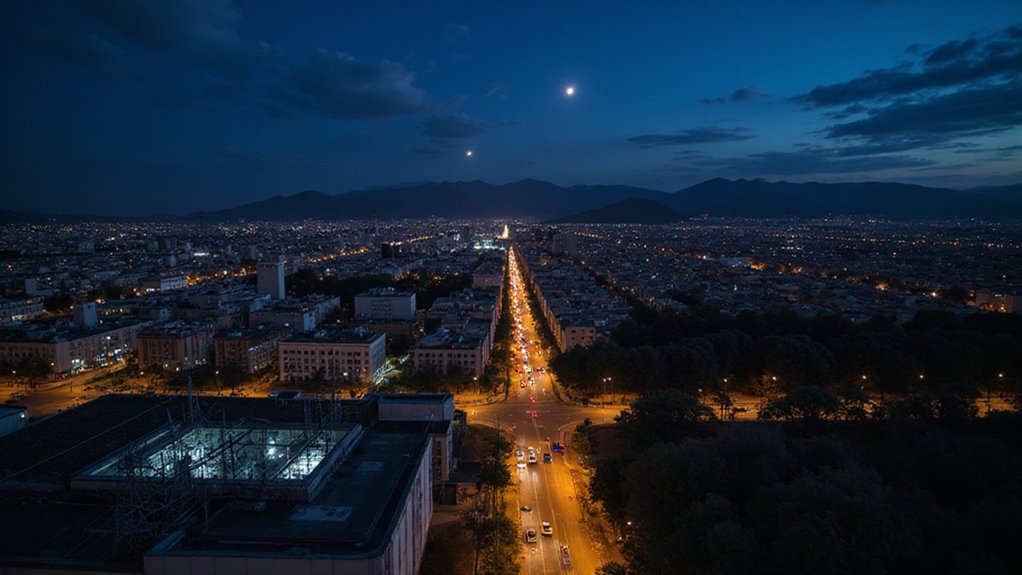While homeowners have been soaking up solar savings for decades, renters have mostly been left in the dark—until now. Plug-in solar panels, also known as “balcony solar systems,” are changing the game. These portable units don’t require permanent installation, making them perfect for the perpetually moving tenant class. No holes in walls. No angry landlords. Just clean energy flowing through your standard outlet.
These systems aren’t exactly powering entire apartments. Most kick out a modest 300-600 watts—enough for a few small appliances but forget about running your air conditioner. Still, they’re making inroads where traditional solar couldn’t go. With solar PV expected to account for half the increase in electricity demand growth through 2027, these accessible options are becoming increasingly important.
Don’t expect to run your refrigerator on sunshine, but your phone charger? That’s solar territory now.
Regulations haven’t quite caught up. Some cities embrace these plug-in solutions; others act like you’re trying to install a nuclear reactor on your fire escape. The regulatory environment is patchy at best, completely confusing at worst.
The economics make sense for many. Lower electric bills. Immediate savings. No waiting around for some theoretical break-even point fifteen years from now. Community solar programs offer another option, with subscribers typically saving 5-15% on electricity costs without installing anything at all.
Landlords are noticing too. Some are actually using tenant solar access as a selling point. Others grudgingly allow it if pressed. Few are enthusiastic supporters. Shocking. These portable solutions can significantly increase tenant satisfaction and retention by giving renters access to sustainable living options previously unavailable to them. Many renters find that highlighting the reduced carbon footprint can help win over eco-conscious landlords who might otherwise be hesitant.
Environmental benefits stack up quickly. Less fossil fuel dependence. Lower carbon footprints. Your neighbors might even stop giving you that judgmental look when you mention climate change at building meetings.
Technical limitations are real, though. Your setup needs direct sunlight—good luck with that north-facing balcony. Shade from neighboring buildings? Efficiency plummets.
For generations, clean energy has been a homeowner’s privilege. These plug-in systems aren’t perfect, but they’re democratizing solar bit by bit. Renters can finally participate in the energy evolution, even if it’s just powering a laptop and coffee maker while feeling smugly sustainable. Progress comes in small, pluggable packages.
References
- https://www.greenlancer.com/post/solar-energy-rental-home
- https://www.integratesun.com/post/can-solar-panels-be-an-option-for-renters
- https://www.greenenergysolar.co.uk/do-tenants-benefit-from-solar-panels/
- https://tynmagazine.com/solar-power-for-renters-heres-how-its-rolling-out-in-the-us/
- https://www.bostonsolar.us/solar-blog-resource-center/blog/should-i-invest-in-solar-for-my-rental-properties/








